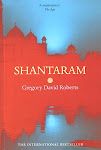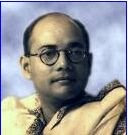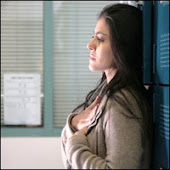Kaushiki Chakrabarty the top favourite classical vocalist you should know about and listen
"Kaushiki Chakrabarty is one of the very few classical vocalists who will make a mark in the 21st century...." This was the assessment made by Bhimsen Joshi, one of India's greatest classical vocalists of the modern era.
The qualities which have given rise to this level of commendation were certainly evident in this captivating performance of Khayal singing given at the Queen's Theatre, Hornchurch, London on the 30th of August 2003.
Born in 1980 in the campus of Sangeet Research Academy, Kolkata, Kaushiki Chakrabarty is now a scholar of this great centre of lndian Cultural learning. The gurus of the Academy repose a great hope in Kaushiki and have blessed her for a glorious musical future.
Kaushiki's mother, Chandna Chakrabarty was her first guru noting that she could reproduce virtually any musical and rhythmic phrase when she was only two years old. Kaushiki then became a "ganda-bandh" shagird (disciple) of her father's guru, Jnan Prakash Ghosh, according to India's ancient system of guru-shishya parampara. On account of the old age of her guru and with his consent, she resumed her training under her father, Pandit Ajoy Chakrabarty. The guru-shishya system of teaching is the most intensive and effective route of musical learning in North Indian Classical music. It is the very soul of the oral tradition of India, and embodies the living and learning relationship between master and pupil. Evolving from the era of the great Indian seers, what the tradition signifies is the complete emotional, intellectual and spiritual surrender of the ardent shishya (trainee) to the guru (teacher).
Kaushiki has already proved herself as a versatile artist. One of the central tenets of Kaushiki's music is voice culture. She doesn't like to be typecast into groves like classical or light musician, her flexible voice means that she is capable of adapting to any style. Kaushiki recently performed at Pandit Jasraj's celebration of his distinguished musical career in Kolkata. Jasrajji was so moved by her performance that he was prompted to make an announcement on stage that he found in Kaushiki the one who will keep the lamp burning as the worthiest successor of the classical vocal music tradition of India.
Kaushiki began this concert performance with a khayal composition in Raga Madhuvanti, a raga with calming and peaceful qualities usually rendered in the late afternoon. Madhuvanti is a relatively new raga. Although it is not possible to determine the time of creation of most ragas, we can say that there are no traces of the existence of Madhuvanti earlier than 50 years. Khayal is the main Hindustani classical music genre. In Hindi, Khayal literally means imagination or thought, and its effectiveness depends very much on the singer's ability to improvise on the chosen raga, more so than the lyrical content of the text. She begins with a short alap, skilfully outlining characteristic phrases of the raga sung to the backdrop of the tanpura drone. Alap is followed by the first composition (track 2) 'Shyam bhaee, Ghanashyam nahi aye more dware' which is set to a slow rhythmic cycle of twelve beats (ektaal) played on tabla. The second composition (track 3) 'Kahe maan karo sakhiri ab' is sung in teentaal, a medium tempo rhythmic cycle of sixteen beats. Kaushiki concludes the performance with a devotional thumri 'Morey Saiyan Bedardi'. Thumri is a romantic classical form which often depicts the depth of love for Lord Krishna. Raga Mand is associated with the rich folk music of Rajasthan in India. Most all the musicians of India have depicted Mand in the light classical forms of music in their own way.
In thumri, the singer is allowed to take a more flexible approach to the raga. Notes outside of the framework of Raga Mand are added with great effect, and for this reason it is considered as Misra (or mixed) Mand.
For this recital Kaushiki was accompanied by tabla player, Yogesh Samsi, son of the renowned vocalist Dinkar Kaikini. Yogesh is a highly respected artist of the younger generation and one of the foremost disciples of the late tabla virtuoso Ustad Alla Rakha Khan. He is known in the world of Indian music, as one of the most sensitive accompanists, demonstrating both an understanding of vocal music and virtuosic tabla skills. Kaushiki's father Pandit Ajoy Chakrabarty provides excellent harmonium accompaniment with supporting harmonium accompaniment by Sri Chiranjib Chakrabarty. Chiranjib is an Indian vocal singer himself, having trained under Pandit Arun Bhaduri at the Sangeet Research Academy. He has performed and accompanied both in India and the UK, and has established himself as a respected singer and teacher in the UK. Kaushiki was accompanied on the tanpura by Ranjana Ghatak, a vocal student of Pandit Ajoy Chakrabarty based in the UK.
Kaushiki Chakrabarty - Vocals
Yogesh Kaikini Samsi - Tabla
Ajoy Chakrabarty - Harmonium
Chiranjib Chakrabarty - Harmonium
Tracklist:
1. Raga Madhuvanti - Alap
2. Raga Madhuvanti - Vilambit Khayal 'Shyam bhaee, Ghanashyam nahi aye more dware' (Ektal)
3. Raga Madhuvanti - Drut Khayal 'Kahe maan karo sakhiri ab' (Tintal)
4. Raga Misra Mand - Thumri 'Morey Saiyan Bedardi' (Kehervatal)
http://rapidshare.co.../KC-P.part1.rar
http://rapidshare.co.../KC-P.part2.rar
http://rapidshare.co.../KC-P.part3.rar
http://rapidshare.co.../KC-P.part4.rar












